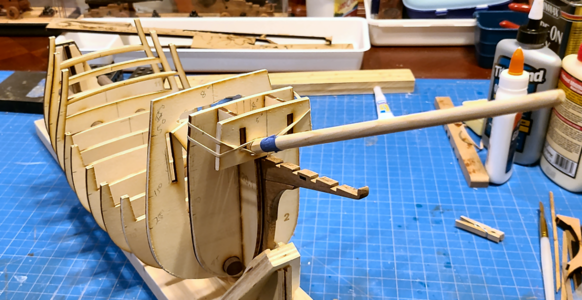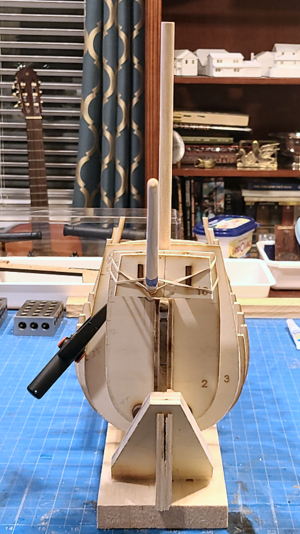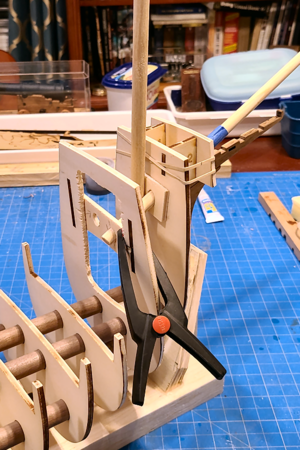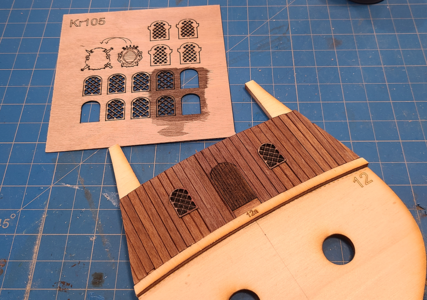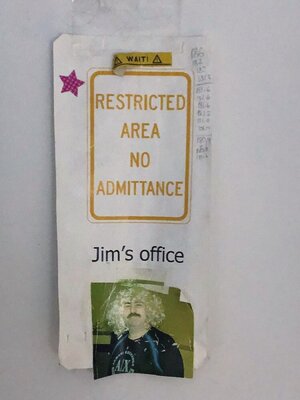In the meantime, I removed and cleaned up the bulkheads
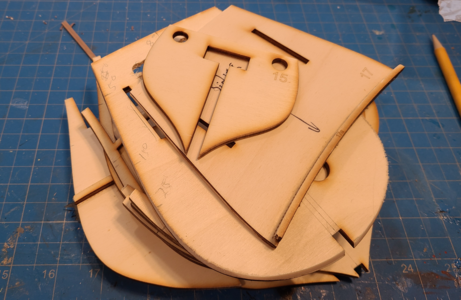
And made a "stand" that supports the model fairly well by its keel and its extensions
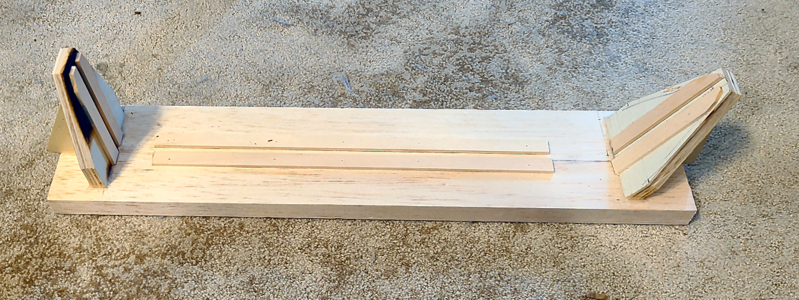
The large base piece is of balsa, and was supplied with the kit, while the rest was from scrap wood on hand.
I'd been reading ahead, reading plans, diagrams, instructions and materials list, and looking at builds by others, and went on a fairly long and involved detour. (Some will no doubt call it a wild goose chase.) One of the biggest changes in the model and plans for the newer kit from the older one is the location of the bowsprit. The original plans (taken without permission from Jack Aubrey's excellent review and build) shows what appears to be a normal, centered location for the bowsprit:
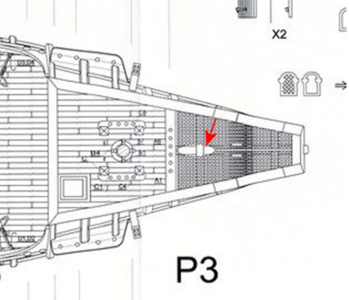
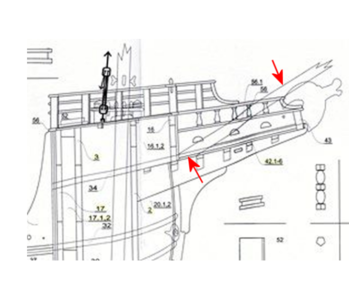
This clearly shows the bowsprit on-center of the ship, and for the model at least, ends in horizontal plate over the grating at the stem (not sure of the terminology). Olha clearly shows in her video how and where to install it:
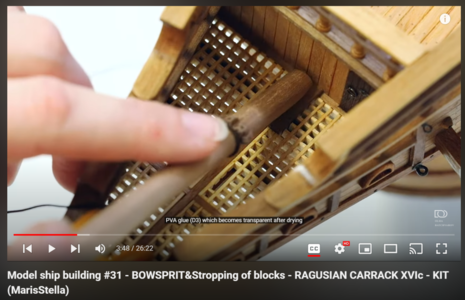
My new plans show something completely different, and at first I was shocked:
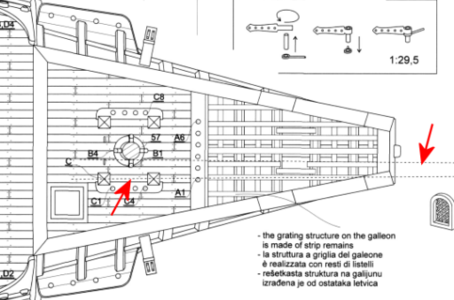
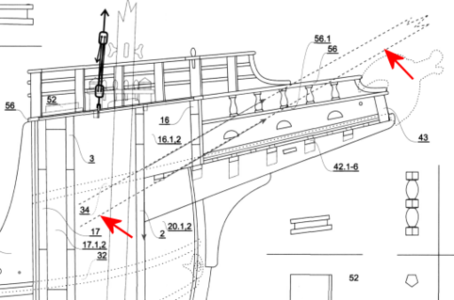
The above clearly shows that the bowsprit extends further into the hull (as it should, for support), and has been offset to the starboard side in order to clear the foremast, which it sits beside. I've never noticed this on a ship, but it makes perfect sense, on a ship of this (smaller) size, where the mainmast is far forward. As this was a later modification of the plans, I'm sure it's intentional and is considered more accurate for the ship, so I need to do it. And it does make perfect sense to me. It's just that I've never noticed it before on a ship, and have to think it will look funny. And people will think I made a mistake. But since that's not unusual for me, I'll take a chance.
Naturally, the bowsprit now has to go /through/ bulkheads 16 and 2, at least, for proper support. I notice from the BM that the bowsprit is made of 10mm round walnut dowel, and proceed with the (incorrect) assumption that it will be 10mm diameter at its base and support, tapering to less at the tip.
So I look for bulkhead 16. AND CAN'T FIND IT! That stack of bulkheads has made it from the sheet, to being cut out, taken to the garage for sanding, back to my den for fitting to the keel assembly, and it's nowhere to be found. One of my bad habits is to work over a trash can, and many a time have had parts fall into it from my desk/workbench, later to be found after going through the plastic bag within. Plus at my age, I drop things all the time, and they bounce who knows where. But I can't find this anywhere. I checked the laser cut sheets thinking I missed it, and while still have them and I marked them with bulkhead numbers, that particular one isn't marked. I found out from Net pics or reviews it was located at the top of another bulkhead. So here I am thinking I lost it, and now have to make a new one.
I WAS able to make a new one. I used its location on the cutout sheet for the bottom width, the top and slots contour from nearby decks, the height from the side view plan, and was able to make a new one. Not having other scrap large enough, I cut out the center of bulkhead 3 (as Olha had done to make a "room" to light):
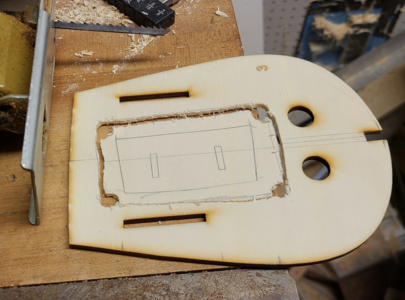
After cutting it and shaping it, I positioned it next to bulkhead 3 and located and drilled the slots for connecting parts:
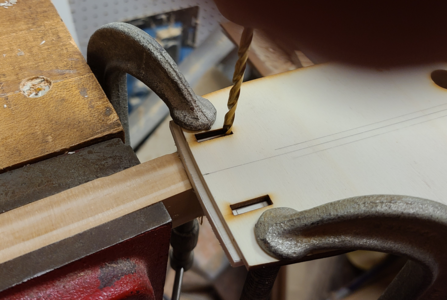
At this point, I located and drilled 10mm holes through the 2 bulkheads (10mm off of center, to allow for the 10mm foremast) and a scrap piece (for the 3rd) at the correct angle (about 30 degrees), glued bulkhead 3 to the frame assembly, temporarily located the other bulkheads and spacers, and fit the 10mm dowel bowsprit in place:
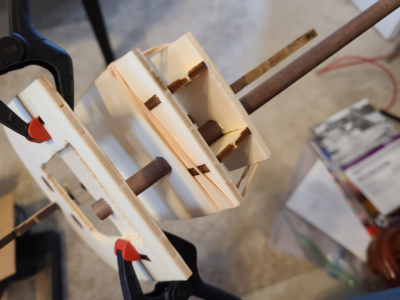
I felt real good about this, having lost a part, constructed a new part, then solved the problem of location and angle for proper support of the bowsprit.
Then it all went downhill: I FOUND THE LOST BULKHEAD #16!
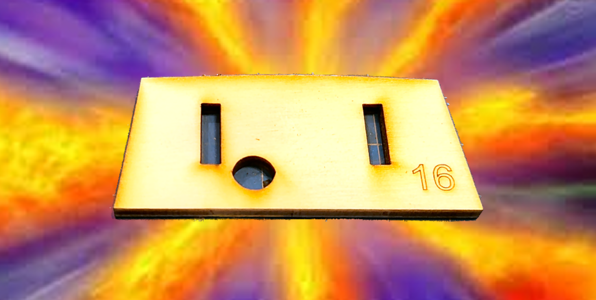
So, why bad? I'd already made a new part, right? Well, a look at this part told me that the hold shown wasn't any 10mm. Closer to 8, actually. So I checked the drawing on the bowsprit. Yes, it's made of 10mm walnut dowel, alright, but the drawings show it more like 9mm or less at its largest. Oh, and it's not long enough to go through the first 2 bulkheads, let alone the 3rd one. And it seems that's the case on all the dowels: most are much larger than they end up being, even in their largest location.
Now, I'm sure all of you are laughing at how stupid I was to assume the included dowels were sized correctly, and only had to be tapered. But remember my first post: the last ship model I made was over 60 years ago! In my cross section models, the masts don't vary much, and start out the right size!

, well not a catastrophe (although if I hadn't made a replacement bulkhead 16, I would have questioned all this earlier): I can use the new, correct bulkhead 16, and even modify bulkhead 2, if I add an extra piece on top with the smaller hole and allowing the bowsprit to reach it. But, this has really thrown a monkey wrench into my timing. I already am questioning how I'm going to taper the masts, spars and bowsprit properly. Now I have to reduce the diameters in some cases by over half at their maximum, over 2/3 at the minimum, and keep them round. So I'm thinking lathe (not for long) or other sanding methods.
The main thing is: I feel I have to actually construct the bowsprit at the final diameter, and preferably taper, before proceeding with the construction of the kit. If it varies in size, then my (new) holes will have to vary as well. And there are some problems with that:
- I really don't know how best to change dowel diameters by a good bit, as well as consistently taper them. I've been doing research, but I'm willing to bet I'll have problems.
- The included bowsprit really isn't long enough, even to make it to the second bulkhead, let alone the 3rd that I had planned. It needs to be on there sturdily. I really need a longer piece for it.
- I have to modify ALL dowels extensively, even though there are standard US dowel diameters (from HobbyLobby.com) that come much closer to the required diameters.
- I've been toying with substituting different materials for the masts in particular, and possibly spars as well. All walnut is a bit more monochrome than I really like. So:
On my Victory cross section, the masts are all light in color (beige or yellow ochre being the accepted norm) while the spars are black. That seems to be the accepted norm for 1700s+ British ships, but don't know that any such standard exists for others, such as a Mediterranean ship from Dubrovnik, Croatia. Could I have your opinions on this?
I'm basically considering getting all new dowels for masts and spars, closer to the required diameter, and of light colored wood. The kit includes 8mm dowels for long double spars that are less than 5mm in diameter maximum! I don't know what kind of wood they use in the HobbyLobby dowels (they say hardwood, but probably not maple), but they have them in 1/8", 3/16", 1/4", 5/16", 3/8" even 7/16", which would save a lot of work (and more importantly insure straighter, better shaped finished products). If I did that, I'd tend to keep the masts color light, perhaps the spars darker (even black?). Again, what do you think?
Please help me out here!

I need to boost my confidence to continue, and need to solve my dowel situation before continuing as well.
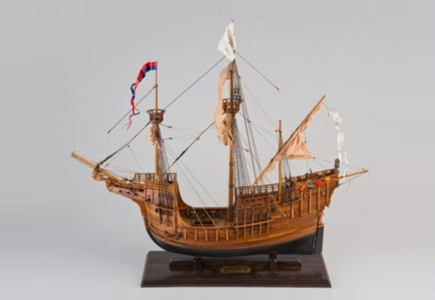



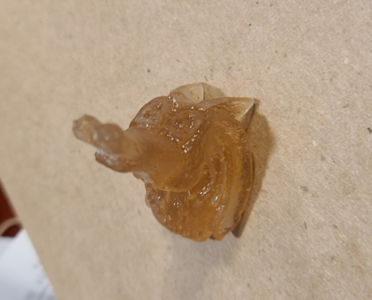
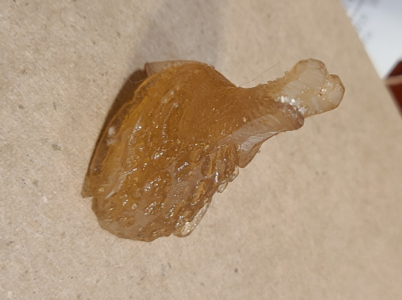
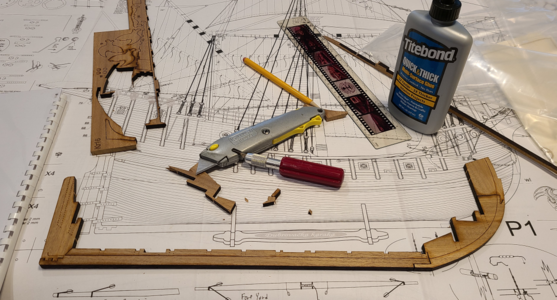
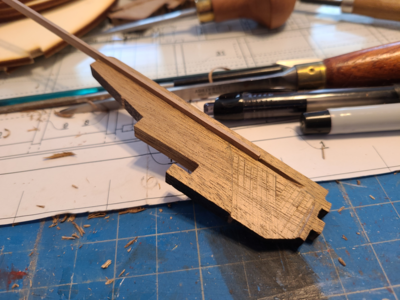
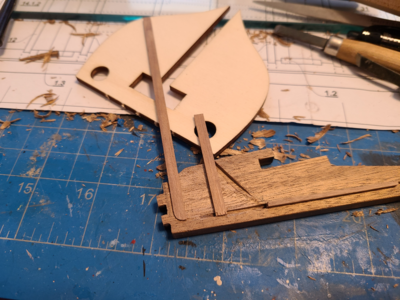
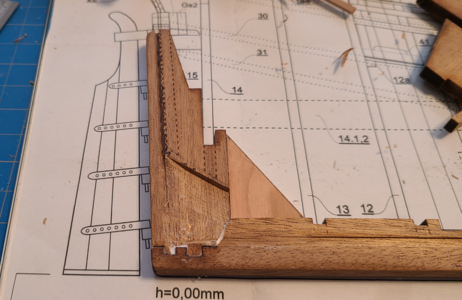
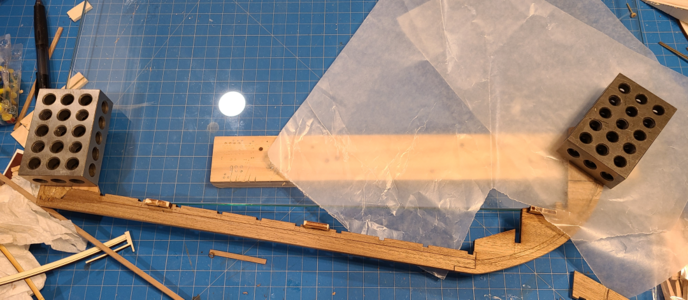


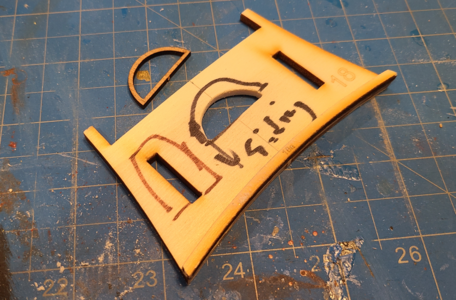
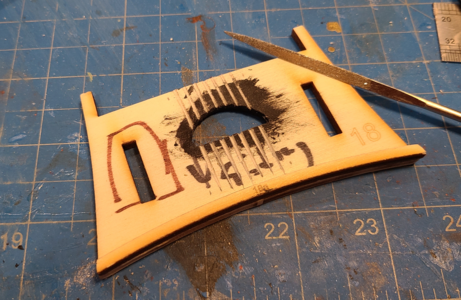
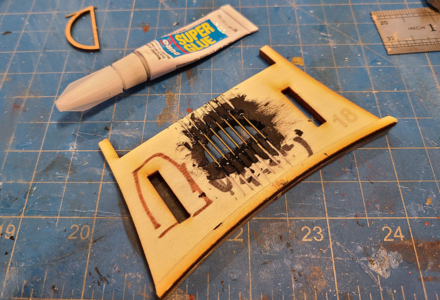
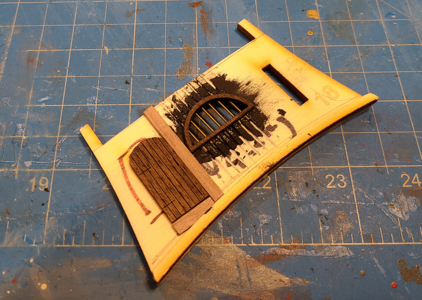
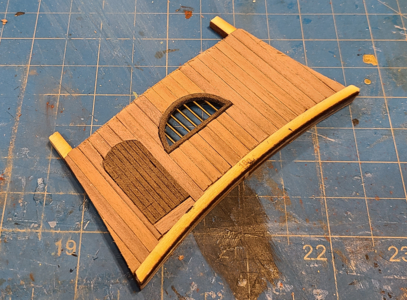
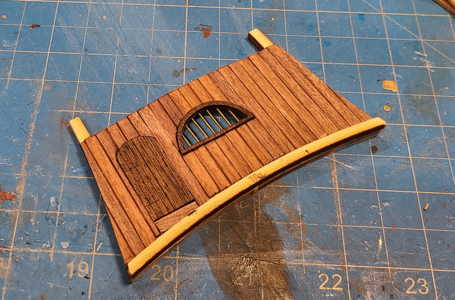
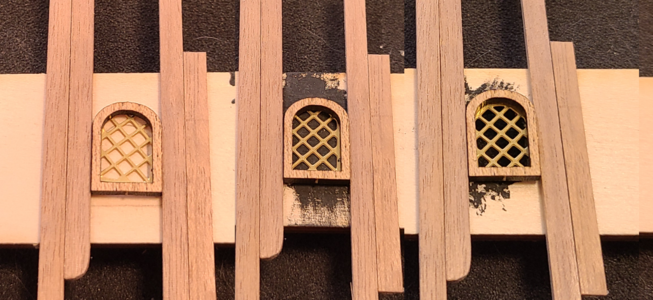











 , well not a catastrophe (although if I hadn't made a replacement bulkhead 16, I would have questioned all this earlier): I can use the new, correct bulkhead 16, and even modify bulkhead 2, if I add an extra piece on top with the smaller hole and allowing the bowsprit to reach it. But, this has really thrown a monkey wrench into my timing. I already am questioning how I'm going to taper the masts, spars and bowsprit properly. Now I have to reduce the diameters in some cases by over half at their maximum, over 2/3 at the minimum, and keep them round. So I'm thinking lathe (not for long) or other sanding methods.
, well not a catastrophe (although if I hadn't made a replacement bulkhead 16, I would have questioned all this earlier): I can use the new, correct bulkhead 16, and even modify bulkhead 2, if I add an extra piece on top with the smaller hole and allowing the bowsprit to reach it. But, this has really thrown a monkey wrench into my timing. I already am questioning how I'm going to taper the masts, spars and bowsprit properly. Now I have to reduce the diameters in some cases by over half at their maximum, over 2/3 at the minimum, and keep them round. So I'm thinking lathe (not for long) or other sanding methods. I need to boost my confidence to continue, and need to solve my dowel situation before continuing as well.
I need to boost my confidence to continue, and need to solve my dowel situation before continuing as well.